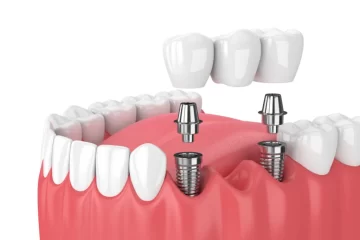Understanding the Fundamentals of Dental Insurance for Individuals and Families

Key Takeaways:
- Explore the crucial role of dental health in overall wellness and the importance of regular dental care.
- Gain a clear understanding of the various dental insurance plans available and how to select the best one for your needs.
- Discover strategies for maximizing dental insurance coverage and handling dental emergencies effectively.
- Stay informed about the emerging trends in dental insurance and how they might influence future coverage options.
Table of Contents:
- Overview of Dental Health Importance
- Introduction to Dental Insurance
- Types of Dental Insurance Plans
- Coverage Details to Look For
- The Cost-Benefit Analysis of Dental Insurance
- Dental Insurance for Children
- Tips for Maximizing Your Dental Insurance Benefits
- Handling Dental Emergencies with Insurance
Overview of Dental Health Importance
The impact of oral health extends far beyond a flawless smile; it is woven into the fabric of our general health and plays an essential role in our daily lives. Robust dental health bolsters our confidence and facilitates effective communication. But beyond aesthetics and social interactions lies the crucial fact that poor oral hygiene can result in detrimental repercussions for our overall health. The mouth is a gateway to the body, and issues like gum disease can escalate into systemic challenges, potentially exacerbating conditions such as cardiovascular disease and stroke. Regular dental visits allow healthcare professionals to spot early signs of such systemic conditions, not to mention address cavities and gum disease and offer essential advice on maintaining proper oral hygiene.
Introduction to Dental Insurance
Many recognize the direct correlation between oral health and our general health, so many seek ways to manage dental care costs effectively. This is where individual dental insurance plans come into play, functioning as a pivotal component in maintaining oral health. These plans are designed to make dental care more accessible and affordable. With various levels of coverage, dental insurance typically focuses on preventive care, helping to reduce the likelihood of severe and expensive dental procedures in the future. They work to incentivize routine dental visits for cleanings, examinations, and early treatment as part of a proactive health maintenance approach.
Types of Dental Insurance Plans
The decision to select the right dental plan can be influenced by many factors, such as the flexibility of choosing a dentist, the cost-efficiency of the plan’s offerings, and specific personal or family needs. Understanding the nuances between HMOs, PPOs, and indemnity plans is essential. HMOs are typically more budget-friendly but require patients to choose from a defined network of dentists. PPOs offer more flexibility in selecting providers and may cover out-of-network services at a higher out-of-pocket cost. Conversely, indemnity plans, often regarded as “fee-for-service” plans, allow patients to visit any dentist but may come with higher premium costs and paperwork responsibilities. Balancing these trade-offs is crucial in finding a compatible plan that aligns with individuals’ health preferences and financial situations.
Coverage Details to Look For
When delving into the particulars of dental insurance, understanding the financial components becomes paramount. Premiums are the regular payments made to keep the insurance active, while deductibles are the amounts individuals need to cover before the insurance starts to pay. Additionally, copayments are the fixed fees paid at the time of service. A pivotal point in dental plans is the annual maximum, the highest amount an insurer will pay within a given year. This cap can critically impact one’s decision to undergo treatments now or postpone them. The specifics of what services fall under preventive, primary, or significant care can vary significantly between plans, with each category often having its level of coverage and associated out-of-pocket costs. Potential policyholders should inspect plans for these particulars to avoid unexpected expenses and maximize the benefits they receive.
The Cost-Benefit Analysis of Dental Insurance
The decision to invest in dental insurance is often riddled with whether the premiums justify the benefits received. Assessing the value involves looking at the immediate cost savings on routine care and the long-term financial protection against complex, pricey dental procedures that can arise from neglect. Regular preventive care, extensively covered by most dental plans, can detect and manage potential issues early on, thereby staving off costly interventions in the future. Moreover, the concept of “dental health inflation” comes into play. Unaddressed minor issues can compound over time, leading to more significant expenses. This forward-thinking approach emphasizes the critical nature of weighing long-term oral health against short-term savings.
Dental insurances often mirror the volatility of the healthcare market, with varying cost structures and benefits. This reflects the industry’s dynamic nature, where plans can change annually, and policyholders’ needs might evolve. Hence, an informed policyholder who analyzes their current and future dental health requirements against plan offerings is better positioned to choose a plan that provides immediate and long-term benefits.
The Role of Dental Insurance in Managing Costs is pivotal in ensuring that individuals and families do not defer essential care due to financial concerns, maintaining a cycle of preventive care that promotes better health overall.
Dental Insurance for Children
The formative years of childhood set the stage for a lifetime of oral health habits. Ensuring access to comprehensive dental care through adequate insurance coverage is crucial for developing strong, healthy teeth and preventing cavities and orthodontic issues. Pediatric dental coverage is a cornerstone of dental insurance and, depending on the region, may be subject to specific mandates. It can include routine check-ups, fluoride treatments, sealants, and orthodontia. Due to their importance, it is incumbent upon parents to fully comprehend how their insurance plan caters to the dental needs of their children—including which treatments are covered, to what extent, and the related costs. This foresight allows for strategic care planning throughout the crucial developmental stages.
Tips for Maximizing Your Dental Insurance Benefits
Effective management of dental benefits requires a proactive approach. It begins with a substantial comprehension of the insurer’s particular benefits package. Knowing the intricacies of your plan’s coverage can guide you in scheduling treatments corresponding to the fiscal year to avoid exceeding annual maximums. Additionally, utilizing in-network providers often results in more favorable cost-sharing terms. Staying within network parameters minimizes out-of-pocket costs and ensures you take full advantage of negotiated rates. Pre-authorization is another vital step in maximizing benefits, especially for more extensive procedures; obtaining approval from the insurer beforehand ensures coverage and estimates associated costs. Through intelligent planning and active management of available benefits, individuals can ensure they are receiving the best possible care while keeping costs manageable.
Handling Dental Emergencies with Insurance
Dental emergencies, such as sudden pain, injury, or infection, demand immediate attention and illustrate the importance of educational preparedness regarding insurance coverage. Individuals should familiarize themselves with their plan’s scope of urgent care, which may vary widely regarding covered services, network restrictions, and potential costs. Being acutely aware of how one’s insurance plan responds to emergencies allows for swift action, potentially averting significant harm and facilitating quicker recovery while mitigating financial stress. When dealing with out-of-network difficulties, understanding the reimbursement process and knowing whether the insurance company provides out-of-area coverage can influence decision-making during these urgent and often stressful scenarios.










